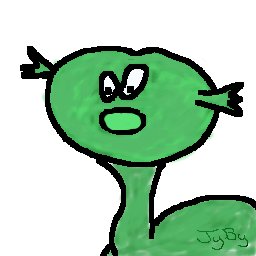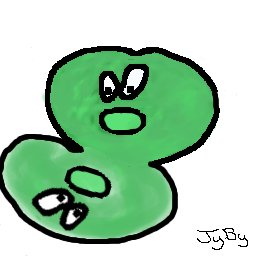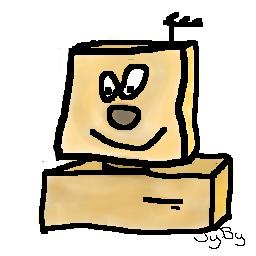InCA: [In]teractions with [C]omputers for [A]nimals
Table of Contents
- 1. Info
- 2. Objectives
- 3. Participants
- 4. Projects
- 5. Medias
- 6. Publications
- 6.1. InCA-ComBoard : A Loggable Aid to Speech: A Research Proposal
- 6.2. Popping Up Balloons for Science: a Research Proposal
- 6.3. Can Monk Parakeets compare quantities faster and/or better than Humans? A Research Proposal
- 6.4. "Measuring Discrimination Abilities of Monk Parakeets Between Discreet and Continuous Quantities Through a Digital Life Enrichment Application"
- 7. Equipment
- 8. Group history
- 9. Photos
1 Info

The group INteracciones Computacionales con Animales (INCA) aim to develop applications for Other Animals Than Humans (OATHs) on digital devices, in collaboration with researchers in Ethology, Comparative Psychology or Animal Computer Interaction (ACI), with the objectives to 1) support the study of the sensory and cognitive abilities of such animals, always in a way which respect their well-being; and to 2) support the human guardians of such animals to comunicate with, entertain, stimulate, or teach the subjects.
2 Objectives
2.1 Short Term
In the short term, assuming a relatively stable environment, the group INteracciones Computacionales con Animales (INCA) aims to automatize and improve various experiments and processes in Comparative Psychology, hopefully so that they can be performed at much larger scales than previously, with higher quality.
2.2 Long tem
In the longer term, anticipating a (fast) derive of climate in various regions of the globe, cumulated with a situation of lower availability of energy, the group INteracciones Computacionales con Animales (INCA) aims to promote the design of new synergistic relation between human and non human animals, by not only improving the communication between those but also suggesting new means for such communication, in such ways that can be transmitted semi-automatically to future (human and non human) generations.
3 Participants
3.1 Humans
- Active
Name Role Main Application Theme From Jérémy Barbay Researcher https://incalab.cl Psycho Informatics 2012 Fabian Jaña CS Engineering Thesis https://comparefast.incalab.cl Adaptive Difficulty Cristobal Sepulveda CS Master https://whatismore.incalab.cl Central Backend and Semi-Automatized Analysis Camila Labarca CS Engineering Thesis https://comboard.incalab.cl Logable Communication Board Dankos Lobos CS Intern https://pop.incalab.cl Ethical study of the limits of abilities Brandon Pena CS Engineering Thesis https://bigkeys.incalab.cl Scalable and Adaptable Keyboard for OATHs Daniel Freire Fernandez CS Engineering Thesis https://pop.incalab.cl Ethical study of the limits of abilities Abraham Oquiche Avila CS Intern https://trackthenumber.incalab.cl Citizen Science Study of Working Memory in OATHs Catalina Castillo Artist Logo and Illustrations Tiare Artist Logo and Illustrations - Past
Name Level Application Theme From To Giovanni Castiglioni Electrical Intern InCA-ActiveFloorTouch Interface via Computer Vision Erick Lemus Engineering Thesis https://memory.incalab.cl Animal Memory Models Patricio López Taulis Engineering Thesis https://whichoneis.incalab.cl Masked Associative Testing Bryan Riveros Engineering Thesis https://train.incalab.cl Spaced Repetition
4 Projects
4.1 Active
- https://whatismore.incalab.cl
A simple application for Masked Comparative Testing, presenting the user with a small amount (e.g. 2 to 4) quantities (e.g. two dice faces, or two recibients filled with a liquid) and requesting to select the largest one, detecting which one is touched on the touch interface, and indicates by visual, sound and/or vibration if correct or wrong, and storing in a log all the details of the sequence of interactions. (gitlab,server)
- https://comparefast.incalab.cl
A refactoring and extension of https://whatismore.incalab.cl, taking more precise measurements of the answering times of the subjects, and attempting to adapt the difficulty automatically (as opposed to leaving it up to a guardian).
- https://pop.incalab.cl
Loggable "Pop the balloon" application, to extend the study of discriminating abilities started with InCA-WhatIsMore to the study of discriminating INabilities in a ethic way.
- https://comboard.incalab.cl
Developping Loggable Hardware Comunication Board for Other Animals Than Humans (OATHs) to be able to comunicate and researcher to analize their communications (Inspired by https://www.hungerforwords.com/ and https://how.theycantalk.org/).
- https://bigkeys.incalab.cl
Design, Implementation and Validation of prototypes of Scalable and Adaptable Keyboard for OATHs (to be used in combination with https://comboard.incalab.cl).
- https://backend.incalab.cl
A central back-end for various applications to gather the usage logs in a website, in order to researchers in Comparative Psychology to select and study them.
5 Medias
5.1 About the group
5.2 About specific projects
- InCA-WhatIsMore
- Short video demo (3mns) https://pt.dcc.uchile.cl/w/jwACLoACoUgeBi7RneXkHt
6 Publications
6.1 InCA-ComBoard : A Loggable Aid to Speech: A Research Proposal
- Authors
- Jérémy Barbay
- Camila Labarca-Rosenbluth
- Brandon Peña-Haip
- Links
- Bibtex
\providecommand{\acronym}[1]{ (\textbf{#1})} \providecommand{\student}[1]{#1$^*$} \providecommand{\correspondingAuthor}[1]{#1$^{\dagger}$} @string { aciwp = "Proceedings of the Conference Animal Computer Interaction, Work in Progress Track\acronym{ACIWP}"} @InProceedings{2022-ACIWP-InCAComBoardReseachProposal-BarbayLabarcaPena, author = {\correspondingAuthor{J{\'e}r{\'e}my Barbay} and \student{Camila Labarca-Rosenbluth} and \student{Brandon Pe{\~n}a-Haipas}}, title = {A Loggable Aid to Speech (for Human and Non Human Animals): A Research Proposal}, pages = {1-7}, booktitle = aciwp, publisher = {ACM Digital Library}, address = {Association for Computing Machinery 1601 Broadway, 10th Floor New York, NY}, year = {2022}} - OUTLINE
- BACKGROUND
- Augmentative and Alternative Communication (AAC) solutions allowing non human animals to communicate in human words by pressing buttons associated to recorded voice have undergone an explosive growth since 2018. Any scientific validation of such communication abilities will require extensive logging of the interactions, which is usually performed by constantly recording the subjects on video, having the guardians reporting and tagging each communication interactions, and researchers analyzing the context before and after the interaction.
- PROBLEM
- Such extensive logging is costly, and its analysis tedious, which limits the amount of data being gathered.
- HYPOTHESIS
- Could a dedicated application give a similar experience, but with the added advantage of generating automatcially an extensive log of usages, which researchers and educators could study in order to validate and improve the methodology, for the subject in particular and in general?
- PROPOSAL
- We propose to design, implement and validate 1) a hardware keyboard to be used by medium non human animals such as dogs and cats to interact with electronic devices; 2) a configurable ``communication board'' application which not only emits human words associated to each button, but also logs such interactions, and allows a guardian to annotate the recent interactions for future analysis; and 3) a centralized back-end gathering the annotated logs from various devices, facilitating their study by researchers.
- VALIDATION
- We propose to validate the usability of such solutions with medium-sized and small-sized non human animals one one hand, and with comparative psychology researchers on the other hand.
6.2 Popping Up Balloons for Science: a Research Proposal
6.3 Can Monk Parakeets compare quantities faster and/or better than Humans? A Research Proposal
6.4 "Measuring Discrimination Abilities of Monk Parakeets Between Discreet and Continuous Quantities Through a Digital Life Enrichment Application"
- Venues
- arXiv
- https://arxiv.org/abs/2206.00734
- ACI 2022 [Research]
- https://doi.org/10.1145/3565995.3566040
- Authors
- Jérémy Barbay
- Fabián Jaña-Ubal
- Cristóbal Sepulveda-Álvarez
- Additional Material:
- Short video demo (3mns) https://pt.dcc.uchile.cl/w/jwACLoACoUgeBi7RneXkHt
- Original Study from Al Ain et al.: https://pubmed.ncbi.nlm.nih.gov/18704526/
- Human Reference
Measuring Discrimination Abilities of Monk Parakeets Between Discreet and Continuous Quantities Through a Digital Life Enrichment Application, by Jérémy Barbay, Fabián Jaña-Ubal, Cristóbal Sepulveda-Álvarez (2022)
- Bibtex entries
author = {\correspondingAuthor{J{\'e}r{\'e}my Barbay} and \student{Fabi{\'a}n Ja{\~n}a-Ubal} and \student{Crist{\'o}bal Sepulveda-{\'A}lvarez}}, keywords = {Other Computer Science (cs.OH), FOS: Computer and information sciences, FOS: Computer and information sciences}, title = {Measuring Discrimination Abilities of Monk Parakeets Between Discreet and Continuous Quantities Through a Digital Life Enrichment Application}, pages = {to appear}, booktitle = aci, publisher = {ACM Digital Library}, address = {Association for Computing Machinery 1601 Broadway, 10th Floor New York, NY}, year = {2022}, } @misc{2022-ARXIV-MeasuringDiscriminationOfMonkParakeetsBetweenDiscreetAndContinuousQuantitiesThroughADigitalLifeEnrichmentApplication-BarbayJanaSepulveda, doi = {10.48550/ARXIV.2206.00734}, url = {https://arxiv.org/abs/2206.00734}, author = {\correspondingAuthor{ J{\'e}r{\'e}my Barbay} and \student{Fabi{\'a}n Ja{\~n}a-Ubal} and \student{Crist{\'o}bal Sepulveda-{\'A}lvarez}}, keywords = {Other Computer Science (cs.OH), FOS: Computer and information sciences, FOS: Computer and information sciences}, title = {Measuring Discrimination Abilities of Monk Parakeets Between Discreet and Continuous Quantities Through a Digital Life Enrichment Application}, year = {2022}, copyright = {Creative Commons Zero v1.0 Universal} }
7 Equipment
7.1 Living and training spaces
| Name | Sun Exposition | superficy | height | Opening Date |
|---|---|---|---|---|
| (m2) | (m) | |||
| Laboratory | indoor | 3x1 | 2 | 2019 |
| North-East | shady outdoor | 3x1 | 2 | 2020 |
| North-West | shady outdoor | 3x1 | 2 | 2020 |
| South | sun/shade outdoor | 3x6=18 | 2 | 2021 |
7.2 Hardware devices
- Leitner box with
- >20 carton cards indicating which exercise to train
- Two rows (one for each subject)
- 5 boxes of increasing frequency categories in each row and
- one paper wheel indicating which frequency to train on a specific day.
7.3 Digital Devices
- Touch screens
Name Type Brand Surface Active Source (cm2) Red Smartphone Samsung Galaxy Note 9 15x7 J….y B….y Grey Smartphone Samsung Galaxy Note 9 15x7 J….y B….y Nexus Smartphone Samsun Nexus One 8x5 J….y B….y Big Tablet Tablet Samsung Galaxy Tab A 16x12 Vanessa P. Araya - Keyboards
Name Description Brand Surface Active Source (cm2) (Donated/Bought by) Recordable Answer Buzzers (4) Recordable Buttons Learning Resources 4*(9x9) J….y B….y Fluent Pet Buttons (6) and pads (3) Recordable Buttons Fluent Pet 6*(3x3) J….y B….y BigKeys 1.0 USB Keyboard with large keys Goma Hevea Home Made 6*(4x4) Sistemas DCC BigKeys 2.0 USB Keyboard with large keys Poly Carbonate Home Made 8*(5x5) Electro Systems
7.4 Physical Training toys
| Name | Exercises associated |
|---|---|
| Basket ball court with 2 hoops | "Play Basket", Clean Up |
| High Basket ball hoop | "Play Basket" |
| Low Basket ball hoop | "Play Basket" |
| Set of small dices in green recipient | "Play Basket", "Fetch" |
| Metal Piggy Banks for sorting coins (4) | "Sort the coins" |
| Set of cards "Memorice Plus" | "Which one is" |
| Row of four closed wood boxes | "Where is the Key?" |
| Bag of scrabble letters | "Give me X letters" (X= "one", "two" or "three"), "Clean up" |
| Tower of rainbow colored rings | "Build the tower" |
| Jenga blocks, uniform | "Play Jenga" |
| Jenga blocks, colored | "Fetch COLOR X" |
| … |
8 Group history
- Before 2008
- development of the concept of "Psycho Informatics", the stydy of the automation of Psychological Processes and Experiments.
- 2012-2015
- (tentative of) collaboration with https://centrodeprimates.com/;
- 2016:
- Rescue of two (male) lovebirds,
PrudentandCrazy - Adoption of Quaker parrot
Lorenzo - Beginning of experimentations with Leitner boxes (Spaced Repetition for Memory Models)
- Rescue of two (male) lovebirds,
- 2017:
- Adoption of Quaker parrot,
Ela - Connection with members of the ACI (Animal Computer Interface) community
- Adoption of Quaker parrot,
- 2018:
- Escape of Lovebird
Crazy - Passing away of
Ela - Adoption of Quaker parrot,
Tina - Adoption of Lovebird,
Blanco
- Escape of Lovebird
- 2019:
- Donation of
BlancoandPrudentto a Breeding/Rescue center for parrots - Acquisition of laboratory site and construction of first aviary (1x2x3=6 m3)
- Donation of
- 2020:
- construction of second aviary (1x2x6=12 m3)
- 2021:
- construction of third aviary (6x3x2=18 m3)
- Recruiting of first 3 students in ACI
- Oficial declaration of the group "InCA" to the depatment
- Interview of student Bryan Riveros about InCA-Train for the podcast of the department
- 2022:
- Graduation (Trabajo de Titulo) of 3 first students in ACI
- First formal results https://arxiv.org/abs/2206.00734
- First Magister Student!
- first article accepted at a conference ACI2022
- purchase and configuration of domain name https://incalab.cl (to celebrate the article accepted)
- first seminar of the group InCA.
- first contact with a laboratory in Ethology
- Three more "Work in Progress" articles accepted at the conference ACI2022, in the track "Emerging Work"
- Cristobal and Jeremy's presentations at conference ACI2022
- Cristobal's presentation at seminar of Ethology Research group
- Jeremy's presentation at seminar of Ethology Research group
9 Photos

